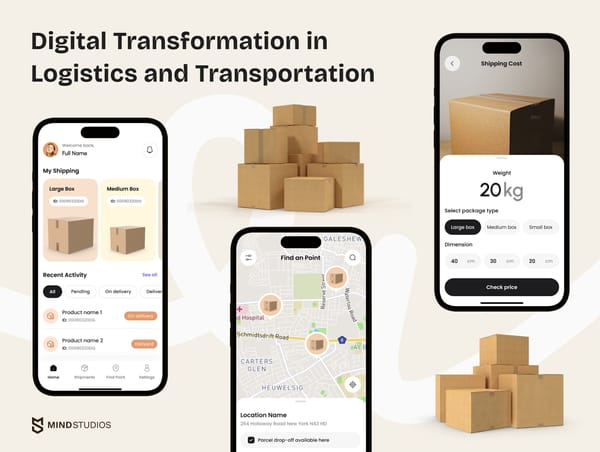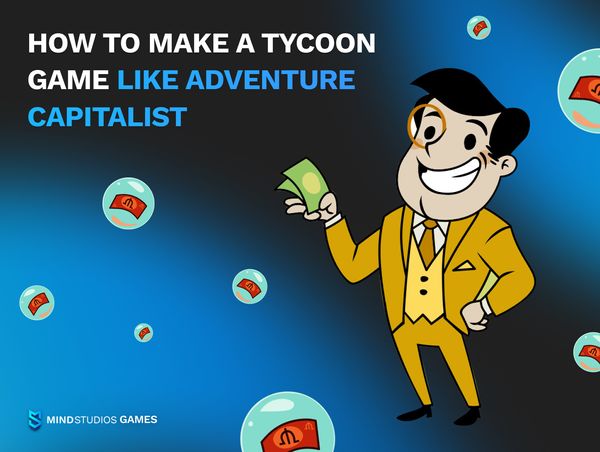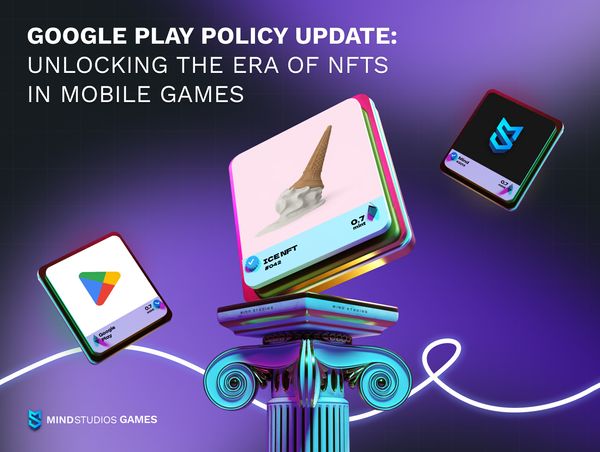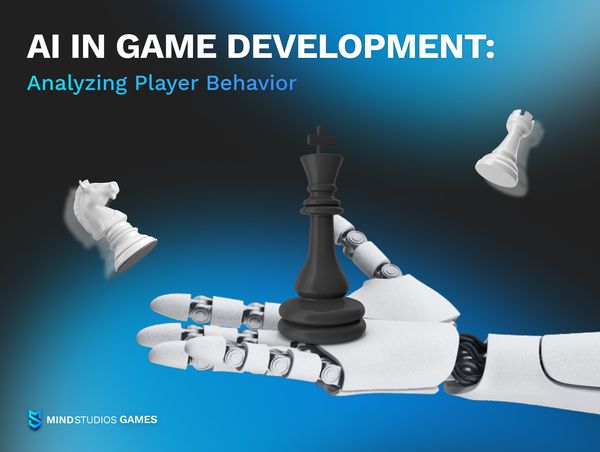Would you like to know how to make an isometric game? What are isometric games, precisely? And what makes them so appealing to both players and mobile games developers? The phenomenon had a huge boom in 2018, when Brawl Stars, a game from Supercell, was finally released after an 18-month soft launch. After its awfully long (for a mobile game) soft launch, what emerged made $10 million in a single week and $100 million in the first two months after its release.
At Mind Studios Games, isometric games are something we know a lot about: we’ve been building them for years. If you want to make an isometric shooter game like Brawl Stars, or an isometric game in another genre, we’d like to offer you some advice in this article.
Why Are Isometric Games So Popular? Brawl Stars’ Example
Let’s not avoid the elephant in the room: Brawl Stars is a Supercell game, so it was bound to get a certain amount of recognition based on the publisher’s name only. Supercell is a recognized leader in the mobile game development industry and is known to coldly cut games that don’t perform at a certain level. The fact that they found Brawl Stars worthy of an 18-month soft launch spoke volumes to some fans.
But Brawl Stars has a number of features that make it stand out from the crowd, pulling in players who might have never heard of Supercell. Isometric games often perform well in terms of player retention, as the engaging perspective and intuitive controls contribute to a positive user experience.
Here are some characteristics of isometric games that attract players.
Aesthetic appeal
An isometric camera is a type of top-down camera that doesn’t always follow the character exactly, but instead shows the playing field from above and at an angle. Like this:
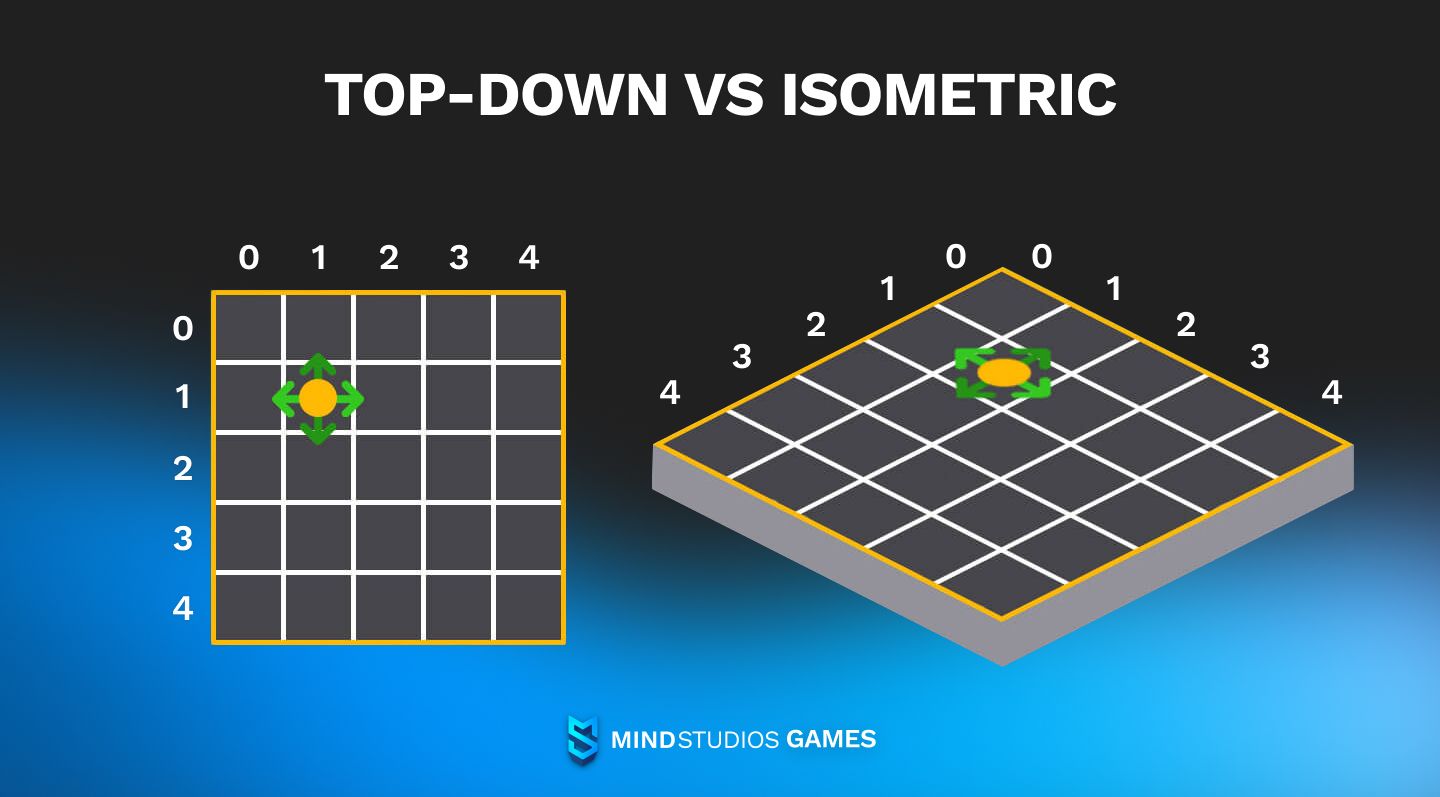
The main reason developers create isometric games is that it preserves all proportions of objects even within the projection — a trait other types of projection lack. Thanks to this, an isometric world makes a 2D image look 3D. Isometric 2D art is also called pseudo-3D or 2.5D.
Of course, isometric view can also be used on 3D art. The angled perspective allows for more detailed and visually interesting environments compared to traditional top-down or side-scrolling views. Brawl Stars, for example, leverages vibrant colors, detailed character designs, and visually appealing landscapes, contributing to its overall aesthetic charm.
Engaging gameplay perspective
Isometric games provide a distinctive top-down perspective that enhances the gaming experience. This perspective allows for a broader view of the game world, making it easier for players to strategize and navigate through the environment. In Brawl Stars, the isometric viewpoint enables players to have a comprehensive understanding of the battlefield, promoting strategic decision-making during fast-paced matches.
Easy-to-learn controls
Isometric games often feature simple and intuitive controls. The angled viewpoint provides a clear view of characters and their surroundings, making it easier for players to control their characters and interact with the game environment. Brawl Stars, for instance, utilizes a tap-to-move control scheme, making it accessible to a wide audience.
Mobile-friendly design
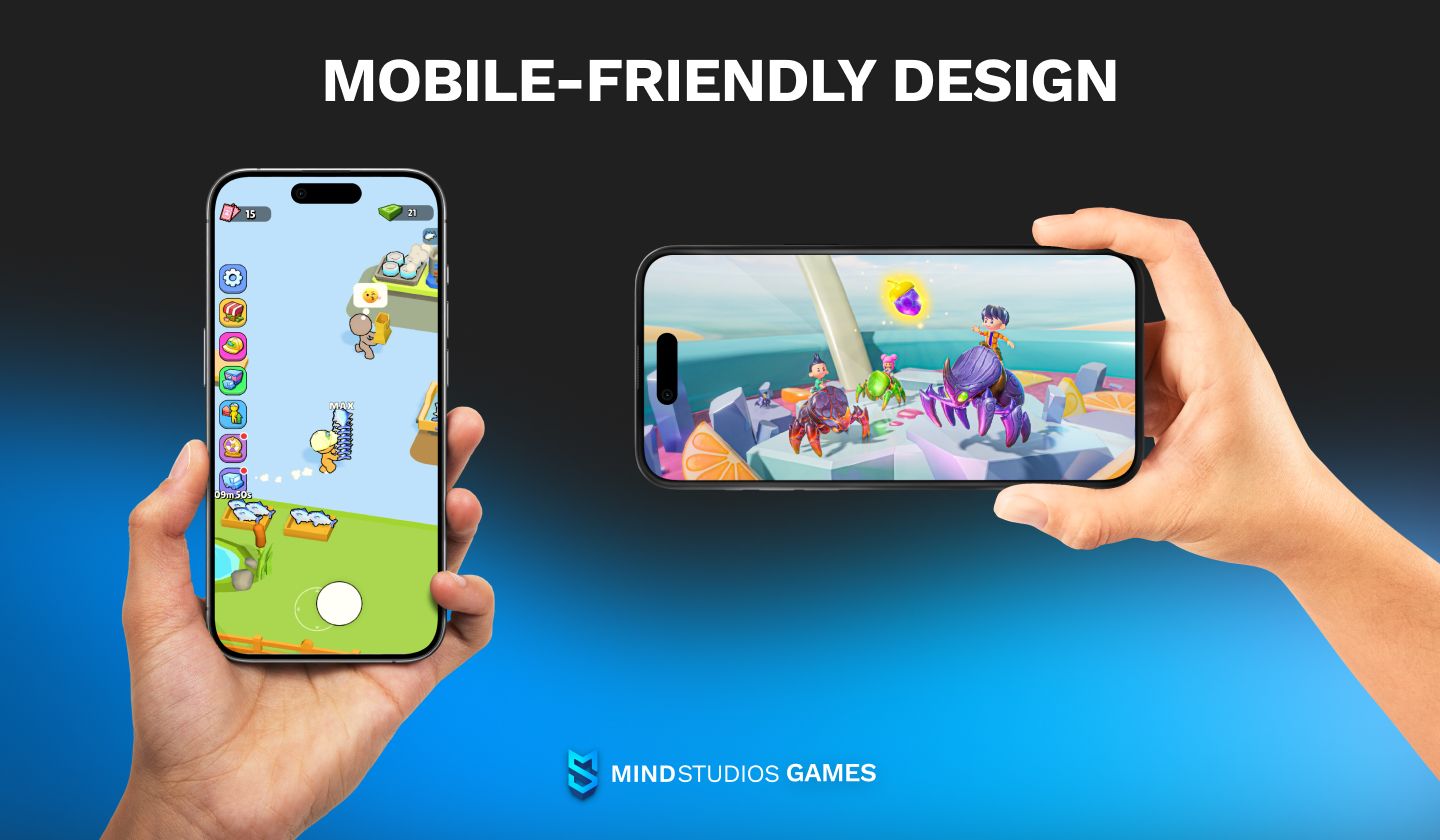
Isometric games often translate well to mobile platforms. The simplified controls and the ability to present a detailed game world without overwhelming hardware make isometric games like Brawl Stars well-suited for mobile gaming. This adaptability to various platforms contributes to the widespread success of isometric games, particularly in the mobile gaming market.
Multiplayer focus
Many isometric games, including Brawl Stars, are designed with multiplayer experiences in mind. The top-down perspective facilitates multiplayer engagements by providing a comprehensive view of the game arena, allowing players to coordinate strategies and engage in team-based gameplay. The multiplayer aspect enhances the social element of gaming, contributing to the game's popularity.
The default battle mode in Brawl Stars is three-on-three teams. Players can team up with friends or random players, which makes Brawl Stars a social game.
Short rounds
Many isometric games can be classified as hyper-casual or hybrid-casual. The selling point of these types of games is that they can be played quickly and without disrupting other tasks — during lunch break, between classes, or on a commute.
You can learn how to make a hyper-casual game in our previous article.
In summary, isometric games like Brawl Stars have become popular thanks to their engaging gameplay perspective, easy-to-learn controls, aesthetic appeal, multiplayer focus, and mobile-friendly design. The success of Brawl Stars, along with the broader trend in the gaming industry, highlights the enduring popularity of isometric games.
How to make an isometric game like Brawl Stars
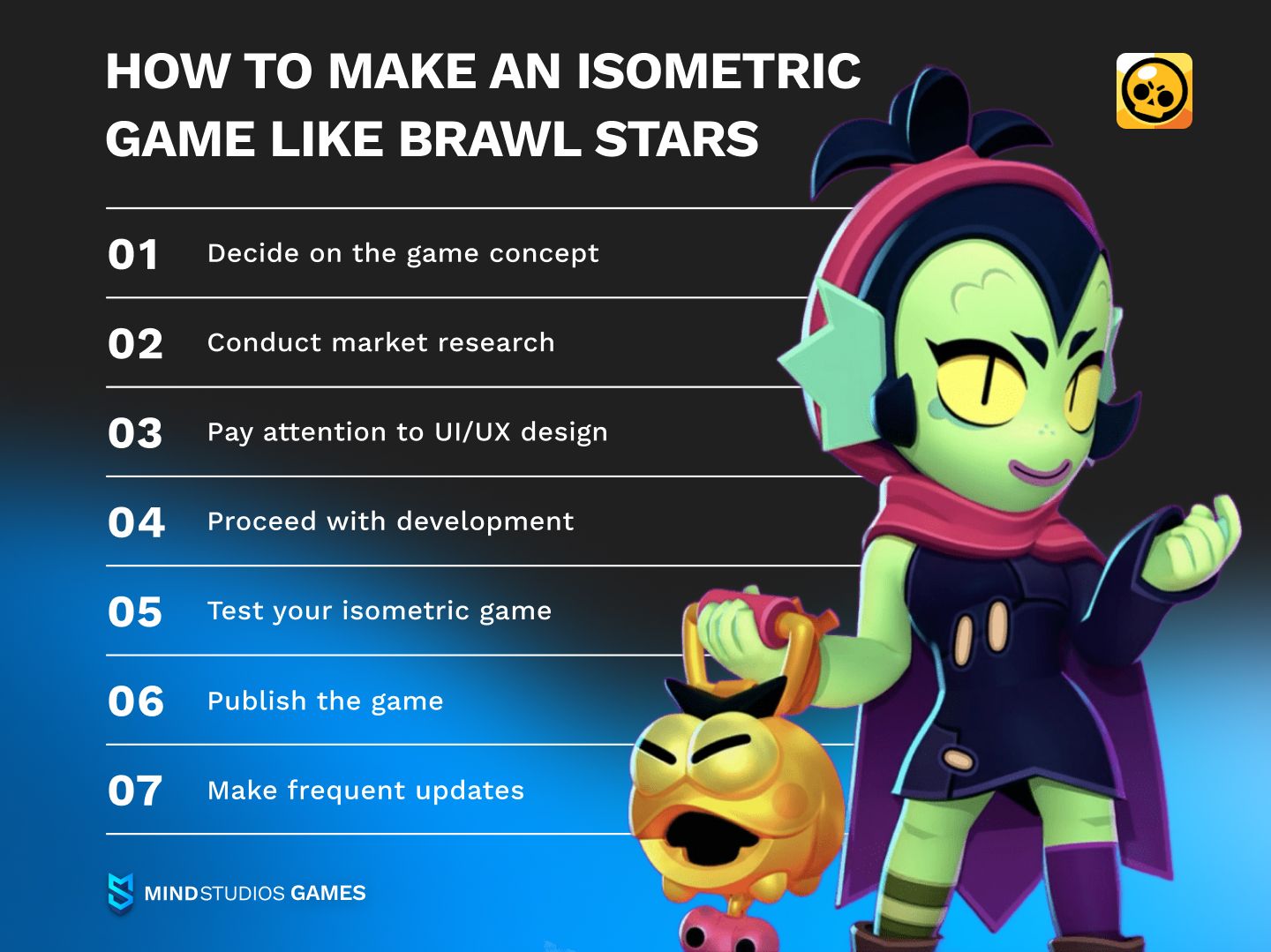
Based on everything we’ve mentioned above, here are the things you’ll need to consider as you plan your isometric game development.
Decide on the game concept
Isometric perspective isn’t limited for use in multiplayer shooters, and such games aren’t the only ones that can benefit from isometric view. Here are some things you’ll need to decide on before the actual development.
| Multiplayer or single player | As you’ve seen, both options are plausible. Multiplayer games similar to Brawl Stars and Tacticool are more social, as they require collaboration with a team. They can be a bigger challenge for individual gamers. At the same time, they’re more popular among hardcore PC and console gamers who are used to multiplayer games. |
| Game setting | There are very few limits in terms of settings when it comes to isometric games, whether you plan to make an isometric shooter game or go for a different genre. The Wild West is a popular setting for this genre, but the same goes for all kinds of war settings — historical, current, future, real and fictional. Let your imagination roam free! |
| Art and animation | Before you begin the actual isometric game design, it’s important to make a decision about art. Ask your team for mockups and early drawings to make sure there are no misunderstandings. You can choose a style that’s realistic (like Tacticool) or cartoonish (like Brawl Stars and Space Marshals). Or you can go for something in between. Your characters might be humans, or maybe anthropomorphic animals, robots, or elves of Rivendell. Both isometric 2D game development and 3D one are possible. |
| Sound | Games rely heavily on sound, and quality sound can be a killer feature. And bad sound can be the death of it. It’s almost as critical as quality graphics and animations. |
| Core mechanics | What actions will be available for the characters is another significant issue. Will they only be moving around and shooting, or will they do something else as well — collecting loot, jumping over obstacles, or maybe using stealth mode? The camera in isometric games usually only moves horizontally and vertically along axes, so you’ll have to account for that when you make an isometric action game like Brawl Stars. |
| Core game loop | The core loop in Brawl Stars is pretty simple if you think about it. A player engages in a brawl, receives a chest, opens it, upgrades their brawlers, and goes for another round of brawling. But this simple loop is polished to the level where it doesn’t get boring even after days and weeks of playing. In part, that’s thanks to its being multiplayer — new opponents mean new tactics to adapt to. It just doesn’t feel like you’re repeating the same actions, though that’s basically what you do. You’ll need to think of a similarly engaging core loop for your isometric shooter. |
| Monetization | The choice of monetization model and strategy does not, strictly speaking, depend on whether your game is isometric or not. It’s more about game genre, type, and target audience. However, it’s an important part of isometric game development as well, so we couldn’t omit it here. |
You can discuss with your isometric game design team what would fit your idea better, taking into account development time and cost, the state of the market (currently and in the foreseeable future), and other factors.
Conduct market research
When an idea comes to you, it always seems unique and with potential to become highly popular. That’s normal. In reality, though, the competition on the mobile gaming market is so harsh that 43% of games are dropped mid-development, as per Super Scale's November 2023 report.
Now, we wouldn’t want to discourage anyone from trying, of course — in our opinion as mobile gamers as well as game developers, the more games there are, the better. What we’re trying to say here is this:
To have a successful game launch, you need to have more than just an idea.
Namely, you need data on your competitors in the niche, your target audience’s expectations, the overall market situation, etc.
We at Mind Studios Games sincerely believe that any idea can be made into a unique game with the help from data obtained via market research and analysis. That’s why we always recommend our clients to conduct research.
Pay attention to UI/UX design
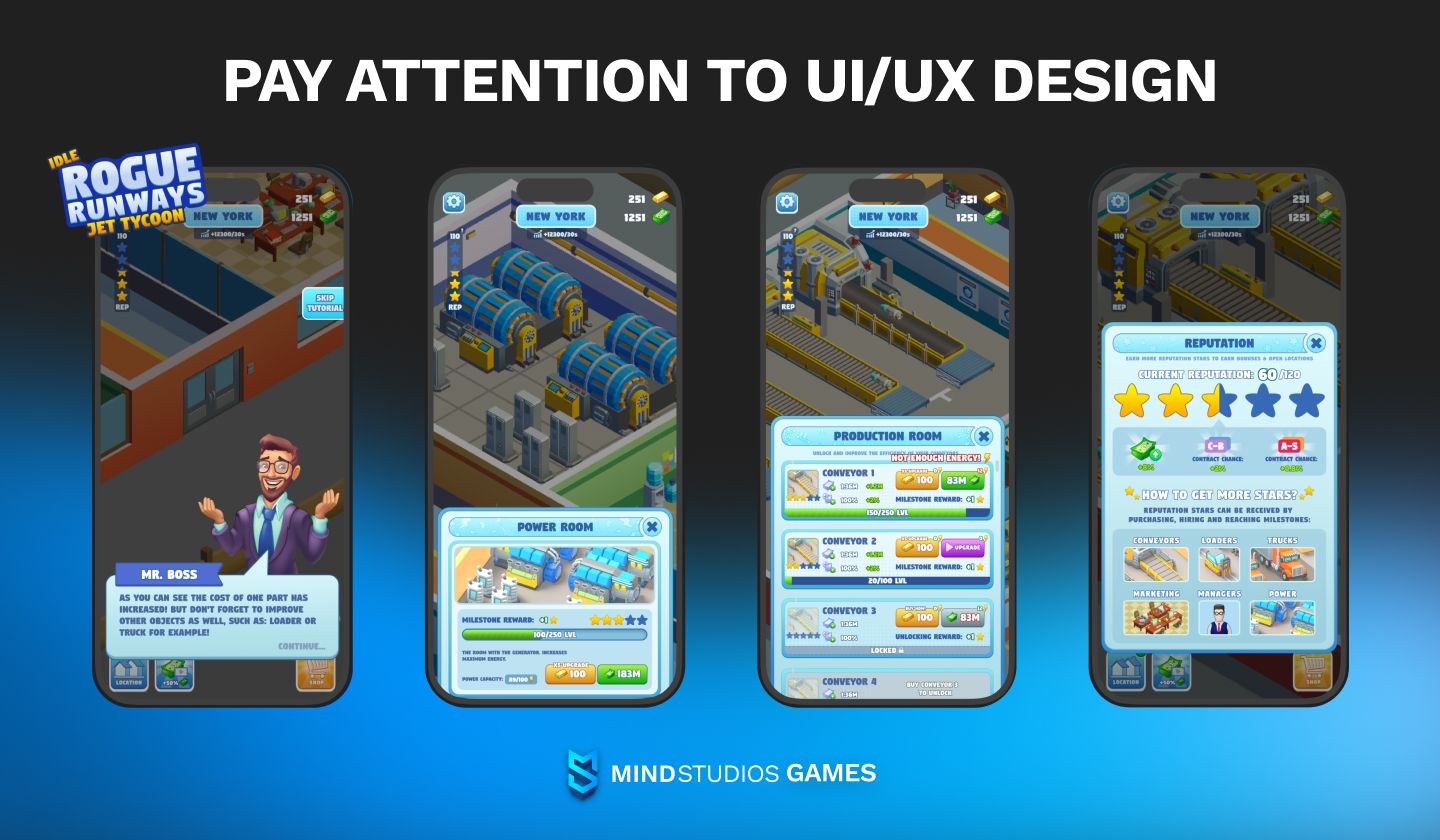
Isometric perspective is something that will have to be taken into account when you make your game’s UI and UX — perspective impacts players’ journey with your game in the same way art does. It will also affect mechanics, thus affecting UI/UX once more.
For this reason, if you’re planning to make an isometric shooter game from the very start, your UI/UX designer will have to keep that in mind when making mockups and prototypes.
Proceed with development
The longest and most expensive stage is, of course, the development.
Most mobile game developers today turn to Unity as their game engine of choice: it’s easy to master, intuitive, and has a big and active community. It also handles the isometric perspective building really well. We at Mind Studios Games would also be making an isometric game in Unity.
During the developments stage, your team will take your game design, art, sound, and UI — and will turn it into the playable experience it’s intended to be.
Test your isometric game
You can’t overestimate the importance of testing when it comes to mobile games. The industry is so competitive that bugs can kill your game before it reaches any profitable stages. Hence, we always urge our clients to allocate enough time to test the game thoroughly.
Publish the game
Mobile game publishing is different from non-gaming app publishing and from launching console and PC games. You can go indie — register a developer account on the app stores and publish your game there. Or you can reach out to game publishers, companies specializing on launching mobile games.
The latter option will cost you more but, with a well-chosen publisher, might bring valuable feedback and more marketing opportunities. The former, however, aside from being cheaper, also gives you and your development team more freedom of creation.
While we can consult on whether to approach a publisher or to go indie, ultimately, the choice is made on the case-by-case basis. We aren’t proponents of one option over the other.
Make frequent updates
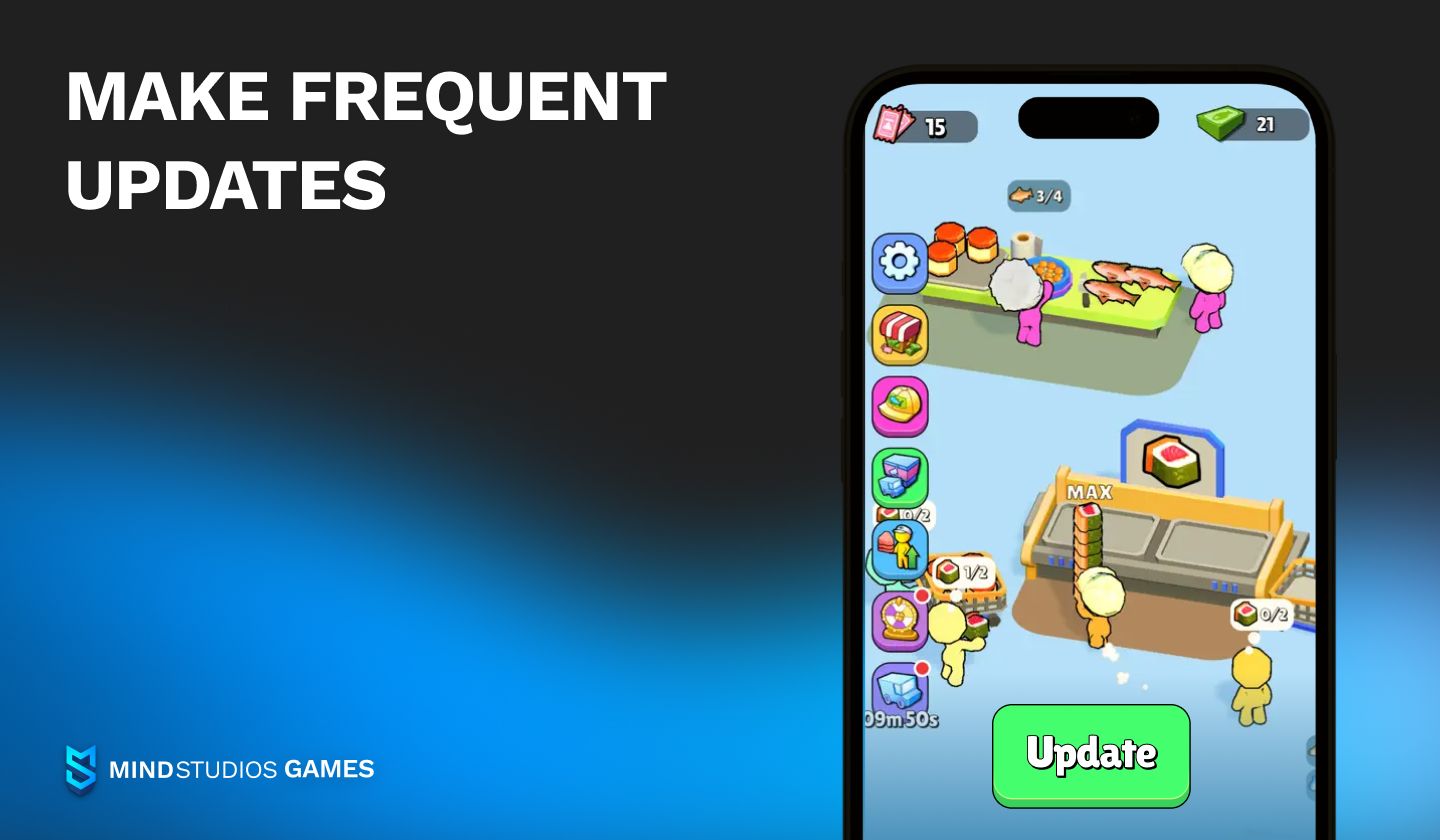
We’ve already mentioned the Super Scale's November 2023 report, where it was stated that 43% of games are dropped mid-development. However, the report has another important figure. According to it, 83% of launched games die within three years, and only 5% live to see a 7-year anniversary. And one of the reasons for that is that many game owners stop updating game content after a year or so.
The mobile games industry is — and we can’t repeat this enough — highly competitive. It’s one of the most competitive industries in software development. It is also the most lucrative — mobile games earn over 50% of all video game revenue in the world. That’s why, to stay afloat for a long time, your game needs to have regular updates. This includes new content, levels, events, and so on.
Employing LiveOps, AI-powered content generation, and other techniques can help you get into those 5% that celebrate 7 years on the market, but this will need dedication. Most mobile game creators offer updates monthly or even twice a month, and that helps their titles stay relevant and engaging to players.
Best features to optimize your 2D and 3D isometric games
While modern technology has stepped quite a bit forward even compared to five years ago, it’s still essential to optimize games. This is necessary for stellar performance on all devices your target audience might have.
Among all the features of your game, animation is one of the things that affect performance. Since we’re talking about isometric game development right now — which implies the existence of a map where characters move — animation will be a crucial part of your game. So, how to optimize it for mobile devices that have lesser tech characteristics?
We will separate this section into three parts: general recommendations, 2D optimization, and 3D optimization.
General optimization recommendations
| UI optimization | Minimize the number of UI elements rendered on each frame and consider implementing UI batching. |
| Collision detection | Choose efficient collision detection algorithms that suit the specific requirements of your game. Avoid unnecessary collision checks and try to use simplified colliders when describing the physical shapes of objects. |
| Efficient animation systems | Optimize animation systems by using sprite sheets or skeletal animation techniques. This reduces memory usage and allows for smoother animations. |
| Culling techniques | Occlusion culling prevents rendering objects that are not currently visible to the camera. This minimizes unnecessary processing and enhances rendering efficiency. |
| Texture atlases | Grouping multiple textures into a single atlas can enhance rendering performance. This is due to minimizing the overhead associated with loading and unloading textures. |
| Memory management | Implement efficient memory management techniques to reuse resources and minimize the impact of memory allocation and deallocation during gameplay. One of the techniques we recommend is object pooling. |
| Batching and rendering | Batching techniques reduce draw calls. Group similar objects together to be rendered in a single draw call. This will optimize rendering performance. |
Specific recommendations for 2D and 3D games
| 2D isometric game development | 3D isometric game development |
|---|---|
| Use dynamic tile generation to load and unload tiles based on the player's proximity, minimizing unnecessary rendering and processing | Efficient shadow mapping techniques enhance the visual quality of the game without sacrificing performance. Consider techniques like cascaded shadow maps for better shadow representation. |
| Particle system optimization by adjusting the number of particles, their complexity, and the frequency of updates. Consider using sprite-based particles for performance benefits. | Optimize lighting calculations, especially in complex scenes. Consider using baked lighting for static objects and explore dynamic lighting options judiciously. |
| Sprite packing tools to efficiently organize and pack 2D sprites into atlases, reducing the number of draw calls and improving rendering performance. | Optimize shaders and materials for better performance. Use techniques like shader instancing to efficiently render multiple instances of similar objects. |
| Optimize tilemap rendering, especially if you have large and intricate maps. Use techniques like chunking and level of detail to enhance performance. | Optimize 3D models and textures to reduce the overall size of the game assets. This aids in faster loading times and efficient use of storage resources. |
Programming languages for isometric games
When it comes to the programming language used to create games like Brawl Stars, developers typically have the flexibility to choose from various options. Commonly used programming languages for game development include:
- C++: Brawl Stars, being a mobile game, utilizes C++ as it offers high performance and efficiency, making it suitable for real-time multiplayer games.
- Java: Java is not commonly used for Android game development, but it does provide a robust and flexible environment for creating mobile games similar to Brawl Stars.
- Objective-C/Swift: These programming languages are used for iOS game development, making them suitable for creating Brawl Stars-like games for iPhones and iPads.
- Unity (C#): Unity, a popular game development engine, allows developers to create games like Brawl Stars using C#. It provides a user-friendly interface and supports cross-platform development.
Isometric games business model
Brawl Stars is a free-to-play game and its monetization model is in-app purchases (IAP). Usually, games like Brawl Stars use IAPs in combination with ads — generally rewarded videos — but Supercell decided against it for this particular title. The selection of IAPs, however, is wide.
Moreover, Supercell created a range of purchase options for each type of currency, offering players simplified transactions: In most games monetized via IAPs, you can buy the main in-game currency with real money and then buy other currencies or upgrades with that main currency. In Brawl Stars, you can buy all in-game currencies directly.
But as we said above, most mobile games use combinations of IAPs with ads. Rewarded video ads typically work well in this type of game, letting players opt to watch an ad to receive some additional in-game currency or small perks. In-app purchases can offer more long-terms perks:
- In-game items, skins, or characters
- Upgrade materials
- Instant completion of quests
- Boosters for longer periods of time than ads
- Removal of interstitial ads (if you’re using them) forever or for some period of time
Depending on what genre your isometric game is and who your target players are, the monetization will differ. To fine-tune your game’s monetization, you can use AI tools for player behavior analysis.
Team size & cost for isometric games development
Brawl Stars utilizes a custom game engine created by Supercell. The specific details and technical aspects of this engine are proprietary and not publicly disclosed. The Brawl Stars game engine is specifically designed to handle the fast-paced multiplayer battles, unique characters, and dynamic environments that the game offers.
Mobile games today are usually built on the Unity game engine. For a while, there were rumors that Brawl Stars was made on Unity, but this is not entirely true, despite the fact that this game engine is one of the best.
Unity offers modes to build an isometric world, and it can handle both 2D and 3D isometric video game graphics at a more than decent level, which isn’t always true for other isometric engines. A game built with Unity technologies will be lightweight and suitable for a wide range of smartphones. These are the main reasons we at Mind Studios Games use this game engine.
To create an isometric mobile game in Unity, you’ll need a team like this:
- Game designer: 1
- 2D or 3D artists: 1–2
- Animation designer: 1
- UI designer: 1
- Sound designer: 1
- Unity developer(s): 1–2
- Backend specialist: 1
- Quality assurance specialist(s): 1–2
We estimate the time to make isometric games at about six months, give or take, before the soft launch. The cost will vary greatly depending on the genre, graphics, mechanics, and other features. Consider $30,000–40,000 as the starting cost to make a game like Brawl Stars.
Other examples of isometric game development
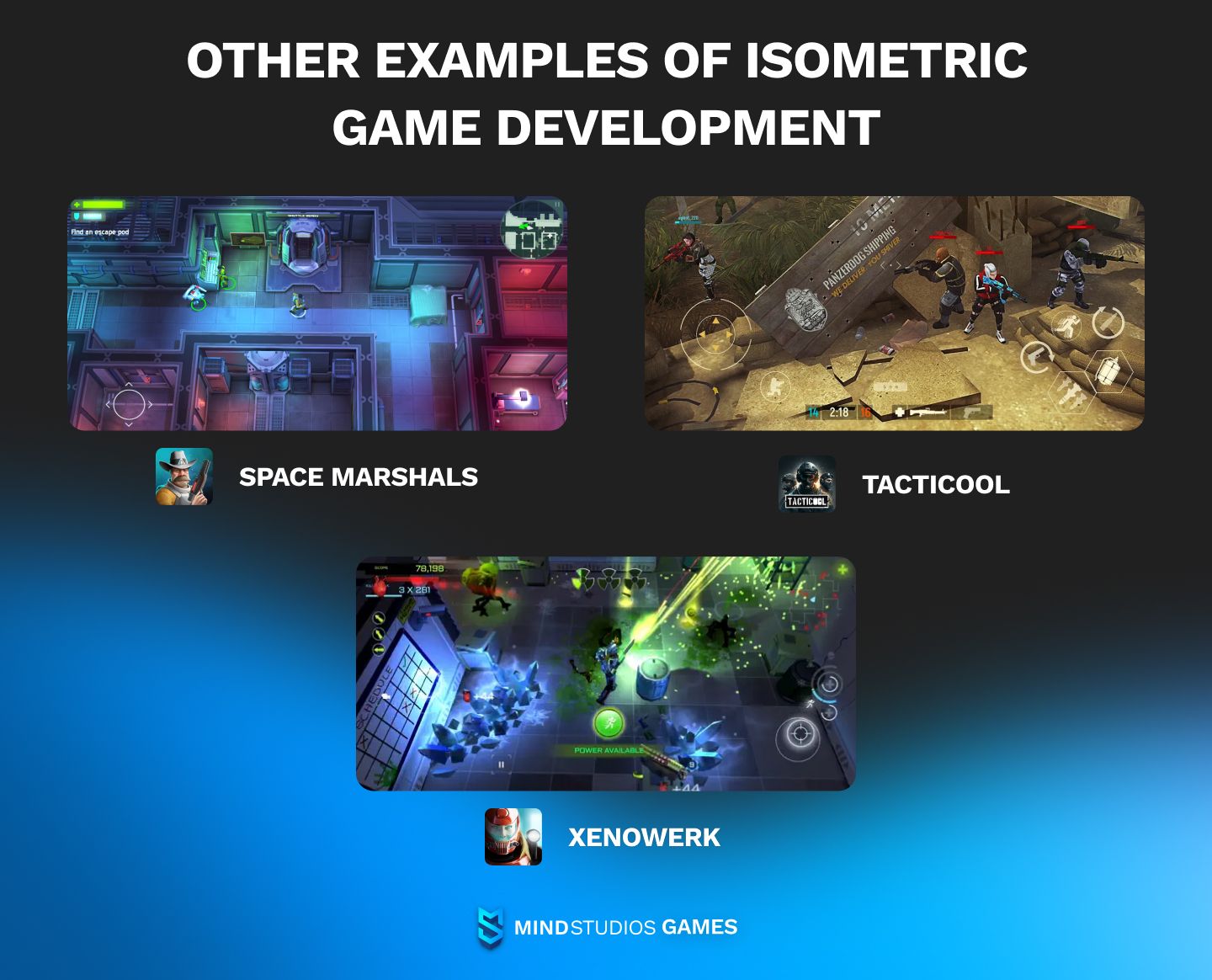
If you’ve decided to develop an isometric shooter, it’s sensible to check out other competitors besides Brawl Stars.
Tacticool
The first game that comes to mind when thinking about isometric shooters is Tacticool. Whereas Brawl Stars is an isometric action game with more than just shooting mechanics (there are melee brawlers too, for example), Tacticool is actually a focused shooter where you purchase weaponry to annihilate your opponents.
Also, in contrast to Brawl Stars’ cartoonish characters and maps, Tacticool’s graphics are more realistic, from the characters themselves to the vehicles and weapons. And in Tacticool, you play in teams of five.
One of the reasons for this isometric game’s popularity is that it’s pretty intense, and that was a conscious decision made by designers. The development team of this isometric game worked to introduce realistic physics into the game for mobile devices. This means that a team of five players need to not just shoot their opponents in under 4 minutes (the length of a match) but do it while taking into account map terrain and objects around. Dedicated gamers find this kind of challenges really fun.
Space Marshals
The setting of Space Marshals is a mix of futuristic sci-fi and Wild West. The main thing that distinguishes this game from both Tacticool and Brawl Stars is that it’s not multiplayer. There’s a single character: a headhunter for prison escapees. Hence, this game is often chosen by players who aren’t here for teamwork 😁
The first game in the Space Marshals franchise, it is often praised for its great action, stealth elements, and intuitive controls.
Another difference from most other isometric mobile games is that Space Marshals’ business model is paid download: It costs $4.99 to download from Google Play Store (or free with Play Pass) and $3.99 for iOS.
Xenowerk
This is another title from Space Marshals' creator Pixelbite. It’s still not multiplayer. In Xenowerk, a player destroys mutants and mutant nests in a lab. This is a game for lovers of games like the Resident Evil franchise or Devil May Cry, but at a more casual mobile-friendly scale. It’s action-packed, and the speed and precision of players’ shots directly affect the score, so it’s gotten a lot of love and appreciation from arcade aficionados fond of fast-paced adventures.
The Mind Studios Games experience
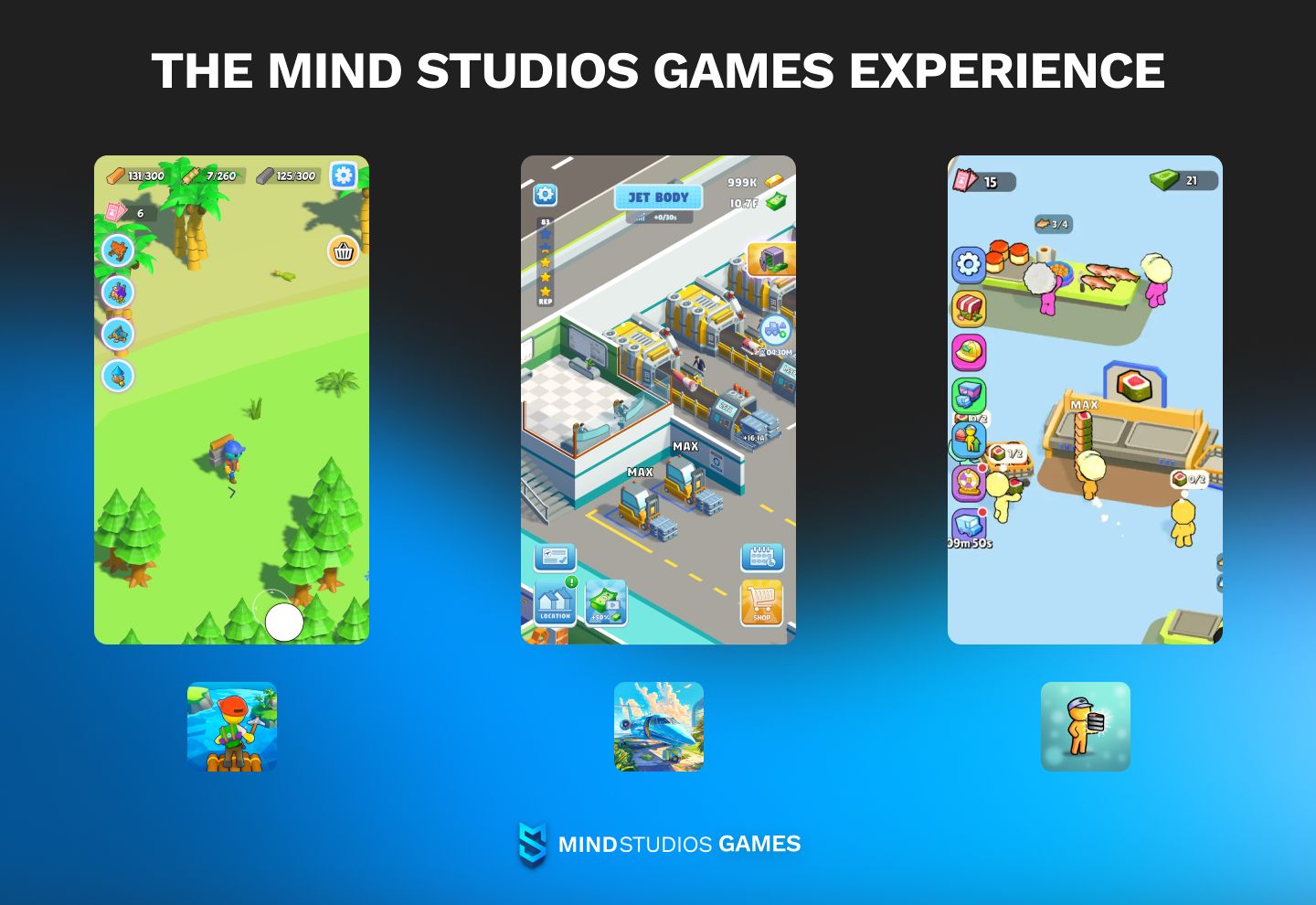
In the years Mind Studios Games has been on the market, we’ve built a number of isometric games, and we also have a shooter game in our portfolio, although we have yet to combine the two.
Or latest isometric game is a tycoon title, a genre that’s one of our specialties. My Fish Shop is built with an isometric perspective and intuitive controls, simple but refined isometric video game graphics, and smooth animation. While not a MOBA title like Brawl Stars, it can showcase our experience in handling the isometric perspective.
You can download it to see for yourself: iOS | Android
At the same time, we also have things to show in the multiplayer shooter games: our CyberHero title is a 3D multiplayer PvP shooter set in — you guessed it — a cyberpunk world. It features a custom auto-aim and shooting system and stunning 3D graphics.
We can handle multiplayer modes, shooting mechanics, and isometric perspective. Does your game idea feature a combination of all three and then some? Or maybe you’d like to know how to make an isometric 2D game? Or a 3D title of a different kind from MOBA like Brawl Stars? Either way, we’ll be excited to take up a challenge.
Conclusion
Isometric games attract players thanks to multiple factors, from intuitive and simple controls to graphics that look more impressive than players expect. They’re also a popular choice for mobile game developers due to the unique qualities of the isometric perspective: small screens of mobile devices are a perk for isometric games. And with both players and mobile game developers loving them, isometric games are becoming more and more widespread and diverse.
Brawl Stars might have been the first isometric title to earn wide recognition and public love, but it was just the beginning for the popularity of isometric games as a whole.
Whether you decide to go for a similar game to Brawl Stars or are interested in how to make an isometric game in Unity that’s unique in a different way, we’ll gladly answer your questions. During a free consultation, we can share our expertise and offer you a rough cost estimate for the project.
If you have any questions about Brawl Stars-like game development, contact us for a free consultation.

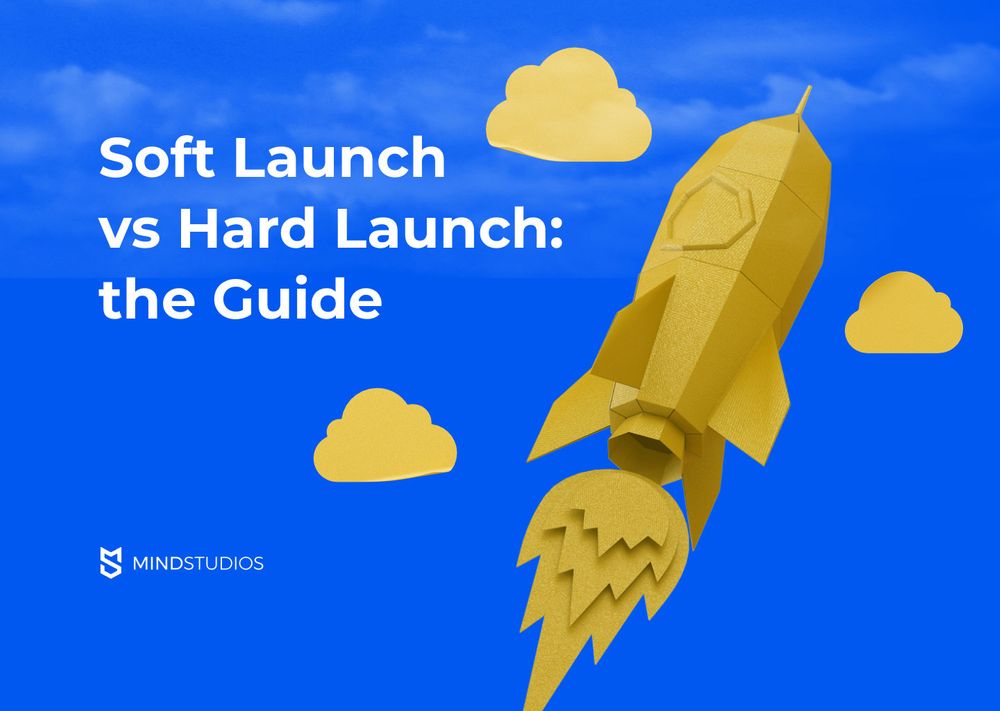
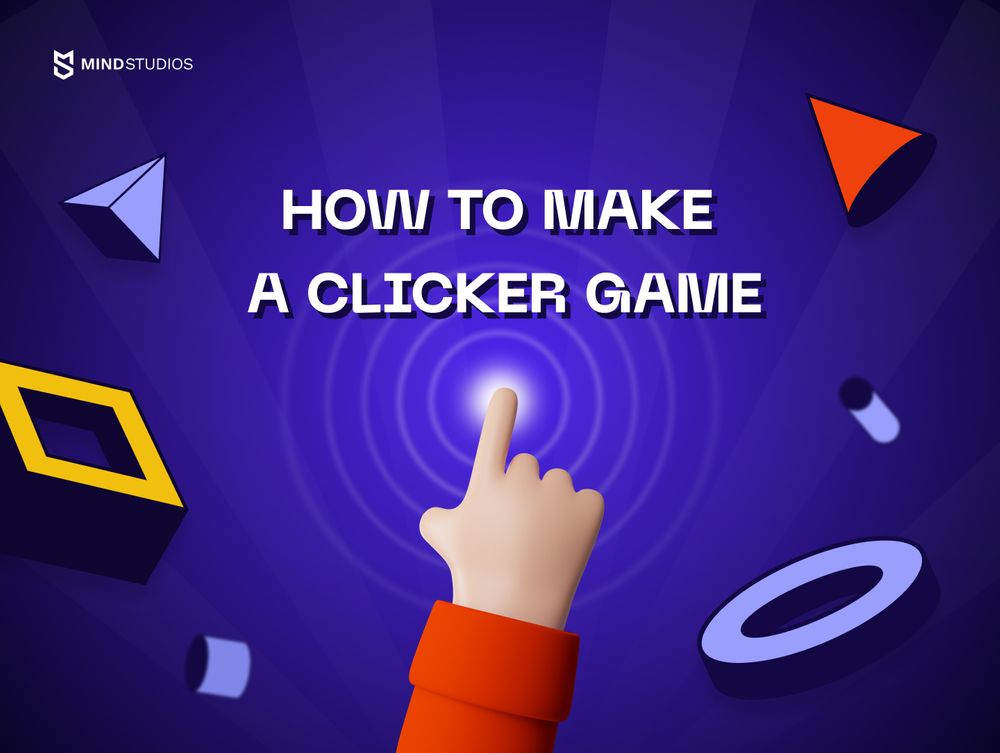
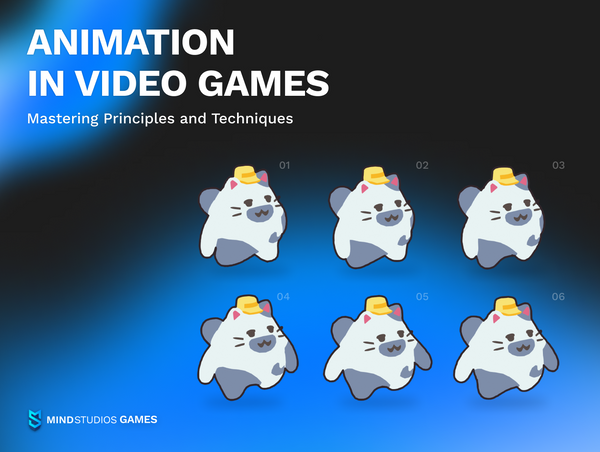
![How to Create an On-Demand Medicine Delivery App [Expert Guide]](https://themindstudios.com/blog/content/images/size/w600/2025/03/IMG-1-Cover-6.jpg)

